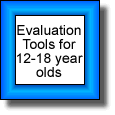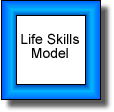 |
|||||||||
 |
|||||||||
 |
|||||||||
 |
|||||||||
 |
|||||||||
Solving Problems: Research Abstract
D’Zurilla, T. J. & Maydeu-Olivares, A. (1995). Conceptual and methodological issues in social problem-solving assessment. Behavior Therapy, 26, 409-432.
The authors of this article discuss the conceptual and methodological issues most directly related to the validity of social problem-solving measures. They examine the strengths and weaknesses of the major current instruments available to researchers and clinicians who require a reliable and valid measure of social problem-solving abilities. They review empirical evidence related to validity of the measures and provide recommendations for the improvement of these measures as well as the future development of new and better instruments of social problem solving processes and outcomes.
D’Zurilla, T. J. & Sheedy, C. F. (1991). Relation between social problem-solving ability and subsequent level of psychological stress in college students. Journal of Personality and Social Psychology, 61 (5), 841-846.
The research study described in this article examines the relation between social problem-solving ability and later psychological stress in college students during the first semester of the academic year. They conducted the study using the Social Problem-Solving Inventory. Results suggest that social problem-solving ability in not a general or one-dimensional ability, but one which involves a variety of different kinds of abilities and skills, which may have different adaptational outcomes in different subject populations.
Elliott, T. R., Godshall, F., Shrout, J. R., & Witty, T. E. (1990). Problem-solving appraisal, self-reported study habits, and performance of academically at-risk college students. Journal of Counseling Psychology, 37 (2), 203-207.
This article describes a research study conducted to examine the relationship among problem-solving appraisal, self-reported study habits, and academic performance of college students. Results of the study indicate that problem-solving appraisal (using the Problem Solving Inventory) is related to study habits and academic performance among academically at-risk students. This study provides evidence against previous research by suggesting that problem-solving appraisal involves more than social skills and interpersonal competence. It also supports the theory that effective problem solvers process and generate more adaptive, goal-directed solutions to problems than do ineffective problem solvers. The authors propose that effective problem solving includes the ability to plan, organize, and recognize appropriate habits, attitudes, and behaviors necessary in problem-solving.
Hill, R. B. (1997). The design of an instrument to assess problem solving activities in technology education. Journal of Technology Education, 9 (1), 31-46.
Hill discusses the need for assessment in technology education in this article, especially the need for development of systematic methods of defining and measuring student outcomes. He developed and field tested a procedure for assessment of the mental processes used by students as they participated in instructional learning activities in technology education. Hill’s assessment tool, named the Observation Procedure for Technology Education Mental Processes (OPTEMP), is a computerized program which uses the duration and frequency of mental processes to assess problem solving ability. Based on the results of inter-rater reliability tests and repeated tests, the OPTEMP was determined to be an effective assessment tool when measuring the use of mental processes used in completion of modular technology education learning activities. This can also be used to compare various instructional products and educational resources. With further testing, it holds promise to be used in more versatile situations.
Hoover, S. M. & Feldhusen, J. F. (1994). Scientific problem solving and problem finding: A theoretical model. In M. A. Runco (Ed.), Problem finding, problem solving, and creativity (pp. 201-219). Norwood, NJ: Ablex Publishing Company.
In this chapter, Hoover and Feldhusen propose a four-component model of problem finding/problem solving. The model is based on interactions among the components as the problem solver gains more understanding of a domain. The authors discuss the need for more research on problem finding processes, especially among gifted students. They also contend that although the model has been validated in a laboratory setting, it must also be verified in the solving of real-world problems.
Hunt, E. (1994). Problem solving. In R. J. Sternberg (Ed.), Thinking and problem solving (pp. 215-232). San Diego, CA: Academic Press.
This chapter proposes a definition of the process of problem solving, and relates that definition to some of the major problem solving research studies. Hunt identifies constraints on human cognition which stems from the biological and social nature of humans. He defines problem solving as that which occurs when one strives to understand the external world by exploring a mental model, instead of trial-and-error directly in the external world. He contends that understanding human problem solving is relatively simple, as long as researchers remember key aspects: the process of reasoning as developed by Newell and Simon, limits on working memory determine the complexity of the problem representation, people use a variety of schemata, and schematic problem solving is effective in that it shifts the burden from the working memory to the long-term memory, in which the problem solver is stronger.
Perlmutter, M., Behrend, S. D., Kuo, F., & Muller, A. (1989). Social influences on children’s problem solving. Developmental Psychology, 25(5), 744-754.
This article contains descriptions and results of three studies that were conducted to examine the influence of social interaction on children’s problem solving. They were conducted with 150 children, ages 4 to 11, who worked at a computer. Age, task complexity, and task familiarity were found to have effects of peer interaction on both learning and motivating. At all ages in the studies, except when the task was extremely complex or familiar to the subjects, working with a peer increased task engagement and enjoyment of the task. The amount of effect peer interaction had on preschool children was determined by age and complexity of task. For elementary-school children, peer interaction had a positive effect on retention of even very complex tasks.
Runco, M. A. & Okuda, S. M. (1988). Problem discovery, divergent thinking, and the creative process. Journal of Youth and Adolescence, 17(3), 211-220.
This study was conducted to examine the role of problem discovery in the divergent thinking and creative performance of adolescents. During the study, adolescents were given three presented problems and one discovered problem, which allowed them to think of a problem and then provide solutions. Results indicated that adolescents generated significantly more responses to the discovered problem than the presented problems, and that problem discovery is associated with creative performance in adolescents. Implications suggest the best way to exercise adolescents’ creativity and problem discovery is to given them tasks which are extremely open-ended and allow them to discover problems and solutions themselves.
